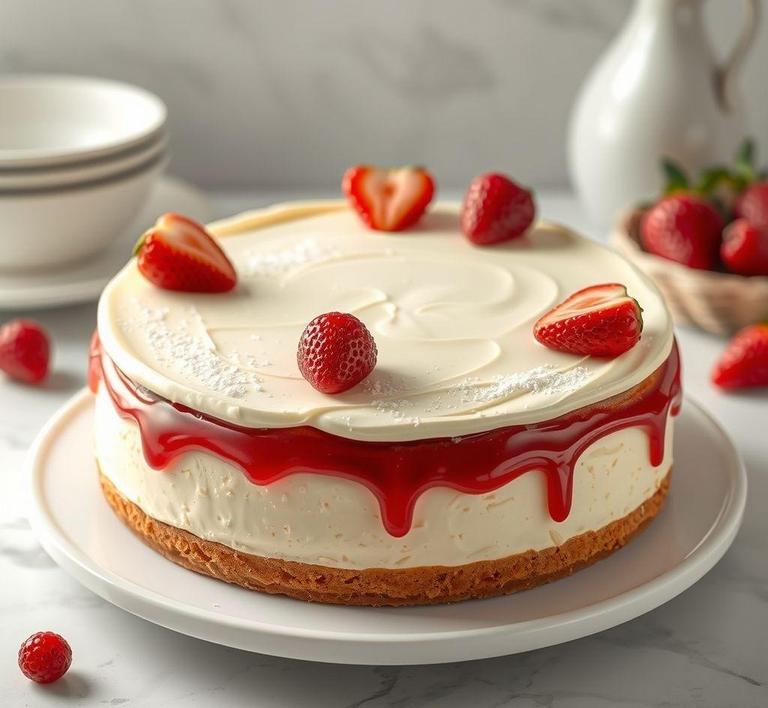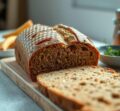If you’ve ever found yourself with half a Sara Lee cheesecake leftover and you’re wondering if you can refreeze it for later enjoyment, you’re not alone! Whether you’ve bought too much or simply want to savor it another time, knowing how to properly refreeze a Sara Lee cheesecake is key to keeping that creamy, delicious flavor intact. In this guide, we’ll dive into the best tips and tricks to ensure your cheesecake stays as fresh as the first bite, no matter how many times you freeze and thaw it!
Can You Refreeze Sara Lee Cheesecake?

Sara Lee cheesecake, renowned for its creamy texture and rich flavor, is a beloved dessert for many. However, when it comes to refreezing this delicacy, the question arises: Is it safe or advisable to refreeze Sara Lee cheesecake? The short answer is: It’s generally not recommended to refreeze cheesecake once it has been thawed.
Cheesecake, especially varieties like Sara Lee’s, contains perishable ingredients such as cream cheese, eggs, and sometimes fresh dairy, which are highly sensitive to temperature fluctuations. When cheesecake is frozen, the water content forms ice crystals that help preserve it. Once thawed, those ice crystals melt, and the texture shifts. Refreezing after thawing means ice crystals will form again but this time in a disrupted structure, often leading to textural degradation.
Additionally, refreezing after the cheesecake has been at room temperature or partially thawed can pose food safety risks. Bacteria can multiply rapidly if the cheesecake is left out too long during thawing. Repeated freezing and thawing cycles increase the chances of bacterial growth and may compromise the safety of the dessert.
In summary, while technically you can refreeze Sara Lee cheesecake, doing so risks both its texture and safety. Most food safety guidelines advise against refreezing thawed dairy-based desserts to preserve their quality and avoid health hazards.
How To Refreeze Sara Lee Cheesecake?
If you find yourself needing to refreeze Sara Lee cheesecake, perhaps due to unforeseen circumstances, it’s crucial to follow careful steps to minimize quality loss and ensure safety as much as possible.
- Thoroughly Chill Before Refreezing: After thawing, if the cheesecake remains cold (ideally below 40°F or 4°C), and has not been sitting out for more than 2 hours, it can be safely refrozen. Keep it refrigerated until you’re ready to refreeze.
- Use Airtight Packaging: Wrap the cheesecake tightly in plastic wrap or aluminum foil. Then place it in an airtight container or a heavy-duty freezer bag. This minimizes exposure to air and moisture, which can cause freezer burn and texture changes.
- Cut Into Portions: If possible, slice the cheesecake into smaller pieces before refreezing. This way, you can thaw smaller portions as needed, reducing the need for multiple freeze-thaw cycles.
- Freeze Quickly: Return the cheesecake to the coldest part of the freezer promptly. Quick freezing helps maintain texture better than slow freezing.
- Label and Date: Mark the date of refreezing so you can keep track of freshness. It’s best to consume refrozen cheesecake within 1 to 2 months for optimal quality.
- Thaw Carefully: When ready to eat, thaw the cheesecake slowly in the refrigerator for several hours or overnight to maintain texture and flavor.
Following these steps can help preserve your cheesecake’s quality and reduce food safety risks, but some textural and flavor degradation is almost inevitable.
Quality Impact
Refreezing Sara Lee cheesecake has a notable impact on quality, especially when it comes to texture, flavor, and appearance.
- Texture: Cheesecake is prized for its smooth, creamy consistency. The formation of ice crystals during freezing ruptures the delicate matrix of the cheesecake. Upon thawing, this leads to a grainy or watery texture rather than the silky smoothness you expect. Refreezing exacerbates this problem because the ice crystals form repeatedly, causing further cell structure damage.
- Flavor: Refreezing may dull the cheesecake’s flavor. The rich, tangy cream cheese and sweet notes may become muted or slightly off due to moisture loss and oxidation. Freezer burn, a common problem when refreezing improperly wrapped desserts, also imparts unpleasant flavors.
- Appearance: Visually, refrozen cheesecake can develop surface frost or ice crystals that alter its look. The crust may become soggy or crumbly after thawing again, reducing its appeal.
Despite these quality hits, some people may find the cheesecake still enjoyable after refreezing if handled properly, but it will rarely match the fresh or once-frozen state.
refreezing Sara Lee cheesecake is technically possible but generally not recommended due to potential food safety concerns and significant quality degradation. Cheesecake’s delicate ingredients and texture make it highly sensitive to freeze-thaw cycles. If you must refreeze, do so carefully by ensuring the cheesecake stays cold, is tightly sealed, and is consumed quickly after refreezing.
For the best experience, try to portion out your cheesecake before the first freeze, so you only thaw what you intend to eat. This approach maintains the creamy texture and rich flavor Sara Lee cheesecake is famous for, ensuring every bite is as delightful as the first.
Is It Safe To Refreeze Sara Lee Cheesecake?
When it comes to refreezing Sara Lee cheesecake, or any cheesecake for that matter, the question of safety is more nuanced than a simple yes or no. Cheesecake is a delicate dessert composed mainly of cream cheese, eggs, sugar, and sometimes gelatin or sour cream, all of which require careful handling to maintain safety and quality.
The primary concern with refreezing any previously thawed food is the potential growth of bacteria during the thawing period. If the cheesecake has been left out at room temperature for too long or thawed improperly, harmful bacteria can multiply, which freezing alone will not destroy. Freezing merely halts bacterial growth but does not kill bacteria already present.
In practical terms, if your Sara Lee cheesecake was thawed in the refrigerator and has remained cold (below 40°F or 4°C) without sitting out for more than two hours, refreezing it is generally safe from a food safety perspective. However, from a quality standpoint, refreezing cheesecake can cause textural changes – the creamy texture may become grainy or watery due to ice crystals forming and breaking down the delicate structure of the dessert.
In summary, while refreezing Sara Lee cheesecake is possible and can be safe if handled correctly, it’s best to minimize the number of freeze-thaw cycles to preserve its luscious texture and flavor.
Signs That Sara Lee Cheesecake Should Not Be Refrozen
Not every slice or cake deserves a second trip to the freezer. Recognizing when your Sara Lee cheesecake should not be refrozen is key to avoiding foodborne illness and ensuring an enjoyable dessert experience.
- Unpleasant Odor or Off Smell: If the cheesecake smells sour, rancid, or ‘off’ in any way, it’s a strong indicator that spoilage has begun. Refreezing at this stage would be unsafe.
- Change in Texture: If the cheesecake has become slimy, mushy, or excessively watery after thawing, this suggests bacterial activity or structural breakdown, meaning refreezing won’t restore it to an appetizing state.
- Visible Mold: Any sign of mold growth is a strict no-refreeze sign. Mold can penetrate deep into soft foods, and refreezing will not eliminate these contaminants.
- Left Out at Room Temperature Too Long: If the cheesecake was thawed and left unrefrigerated for more than two hours (or one hour if the environment is above 90°F/32°C), harmful bacteria could have multiplied to unsafe levels.
- Expired or Past the Use-By Date: While freezing can extend shelf life, if your cheesecake is already past the manufacturer’s recommended consumption date, refreezing isn’t advisable.
In all these cases, it’s better to discard the cheesecake than risk food poisoning or wasting time on a dessert that won’t taste good.
Common Refreezing Mistakes
Refreezing cheesecake may sound simple, but several common mistakes can compromise safety and quality:
- Refreezing After Room Temperature Thawing: Thawing cheesecake on the countertop or in warm conditions before refreezing allows bacteria to multiply rapidly.
- Refreezing Multiple Times: Every freeze-thaw cycle increases ice crystal formation, breaking down texture and flavor compounds, leading to a dry, crumbly, or watery cheesecake.
- Refreezing in the Original Packaging: Often, the original packaging isn’t airtight after opening, allowing freezer burn, which dehydrates the cheesecake and impairs taste and texture.
- Not Using Proper Storage Containers: Using loose plastic wrap or thin foil without an airtight container exposes the cheesecake to moisture loss and freezer odors.
- Refreezing Without Cooling First: If the cheesecake is still warm or only partially chilled when refrozen, it can raise the freezer temperature, affecting other stored foods and causing ice crystal damage.
Understanding these pitfalls can help you avoid spoiling your cheesecake and keep it safe to enjoy later.
Tips And Tricks
To maximize the safety and quality of your Sara Lee cheesecake when freezing and refreezing, here are some practical tips:
- Freeze Quickly: Freeze cheesecake slices individually on a baking sheet before wrapping and storing in airtight containers. Quick freezing minimizes ice crystal size.
- Wrap Tightly: Use plastic wrap followed by aluminum foil or vacuum-seal the cheesecake to prevent freezer burn and protect flavor.
- Label with Dates: Always mark the date you freeze the cheesecake to keep track of storage time. Ideally, consume within 2 months for best taste.
- Thaw in Refrigerator: Thaw cheesecake slowly in the fridge overnight rather than at room temperature to keep bacterial growth at bay.
- Portion Control: Only thaw what you plan to eat to avoid the need to refreeze leftovers.
- Inspect Before Refreezing: Always check for any signs of spoilage before deciding to put the cheesecake back in the freezer.
- Use Airtight Containers: Store cheesecake in rigid, airtight containers or vacuum-sealed bags to maintain freshness.
Conclusion
Refreezing Sara Lee cheesecake is a delicate balance of food safety and maintaining dessert quality. While it is technically safe to refreeze cheesecake if it has been properly handled and thawed in the refrigerator, repeated freeze-thaw cycles will inevitably degrade texture and flavor. Recognizing signs of spoilage, avoiding common mistakes, and following best practices can help you enjoy your cheesecake without risk. Ultimately, thoughtful handling and mindful storage are the keys to savoring every bite of this beloved creamy dessert-even if it means careful refreezing every once in a while.


